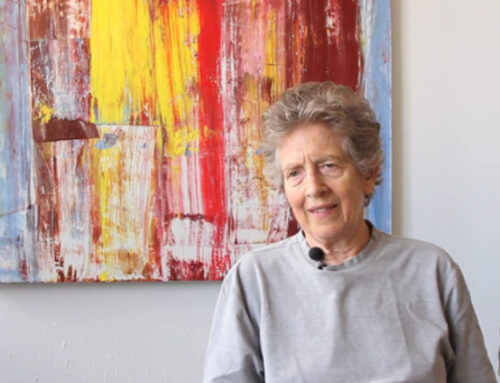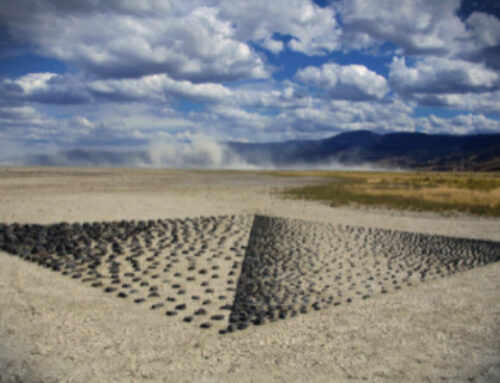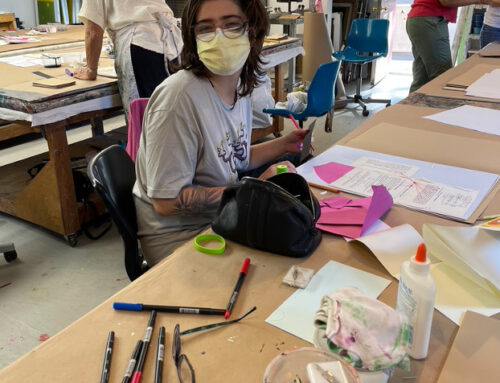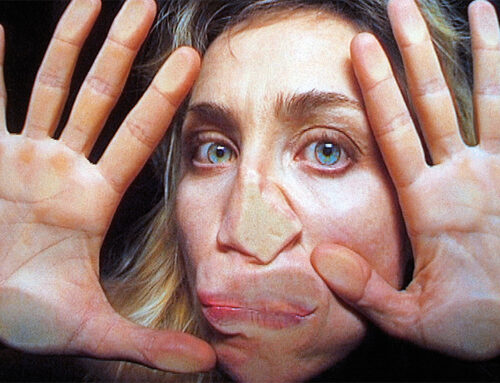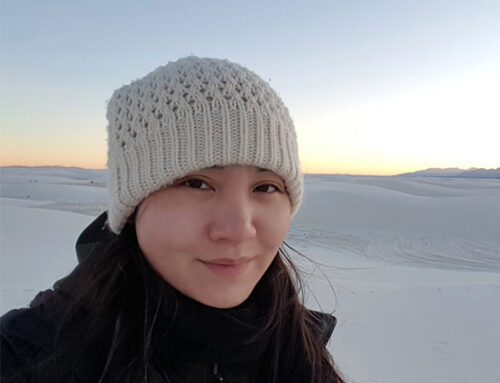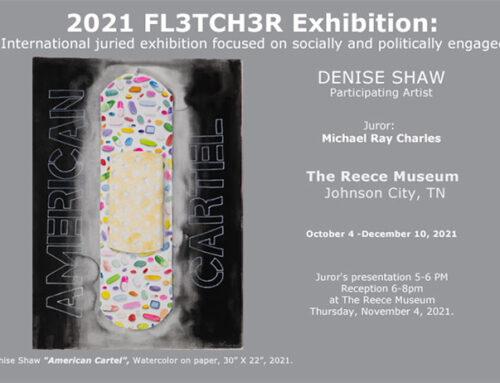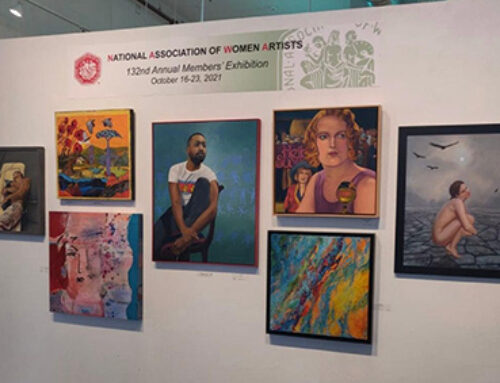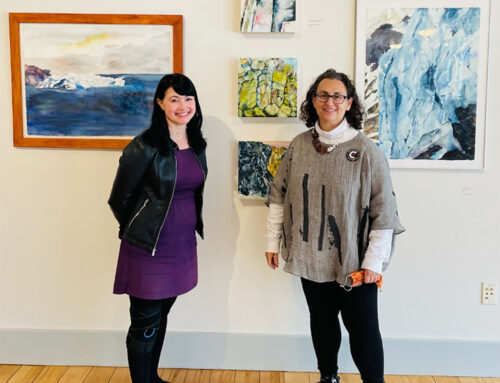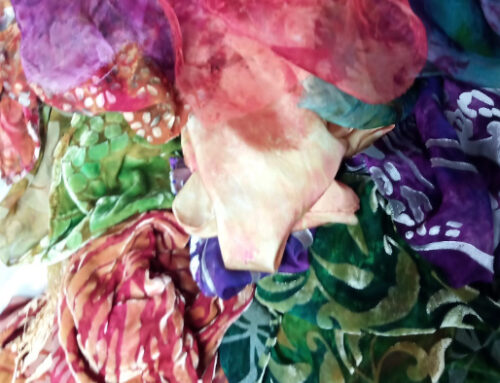Constance Culpepper
Philadelphia artist Constance Culpepper studied psychology and studio art at Southern Methodist University (B.A.) and received an M.A. in Clinical Developmental Psychology from Bryn Mawr College. Her collective work is a depiction of domesticity and the commonalities of personal experience, informed from her background in psychology and her itinerant childhood in rural Texas and Southern Louisiana – filled with antiques, American quilts, and strong women.
With colorful paintings and collages of interior scenes and outside places, Culpepper believes that not all art has to be overtly provocative. She uses an emotional lens to create her work, with a process that is informed by logic, experience, and research. Her early life was filled with conventional female roles and conservative ideology which inspired a contradictory voice. She aims to express femininity, freedom, and social commentary – more specifically, how gender roles define the household and how the household represents something so much larger, how people become attached to objects and ideas, and the deeper connection behind all of this. She creates compositions meant to question.

Three stripes you’re out, 2015, paper collage, 28 x 30 in. framed
Culpepper says, “My artwork is about personal connection – to each other, to the space around us, and to the things within it. I use color in my collages to represent life and emotion, and to create make-believe places. They are dreamlike worlds I fill with pattern, shape and semi-recognizable objects that inspire me to think and dream. I hope the ambiguity in my work allows the viewer to find their own story in it.”

Chair with Bouquet,2020, paper collage, 25 x 21 in. framed
Trained primarily as an oil painter, Culpepper began collaging when her children were young, when she would sit with them as they folded and cut colored paper into abstract shapes and snowflake designs. She kept cutting, using scissors to create her cut paper collages. Culpepper says she likes to use larger scissors when cutting small intricate shapes because it’s a different feel in the hand and generates something more unexpected in the cutting. She likes to play with negative space and let her collages be abstract interpretations of images and ideas that she’s been studying.

Windy day in Milos,, 2020, paper collage, 18 x 24 in. framed
Laura Elkins

Self as Mamie 9/11, oil and ashes on canvas, 42 x 34 in, 2001
Growing up in Oxford, Mississippi during the civil rights movement instilled in me issues of race and social justice, which has driven content through my work — painting and politics. I sat on the front steps of my home and watched the tanks roll into “Oxford town” to assure that James Meredith entered the University of Mississippi. The father of one of my close friends was almost killed in the riot. The army camped on our school playground. In short, we were under siege.

America Selfie (detail), acrylic on Tyvek, 108 x 564 in, 2017
Throughout that memorable year, my public school teacher often shared her creationist beliefs. We covered all the bases! As religious as she was, she tolerated the objections some of her fifth graders raised to her opinions. In retrospect, I suspect she was driven more by her desire to stimulate our minds than to impose her views. She may have introduced me to the fundamental paradox of human nature that has informed what may seem to be the antithetical nature of my work. Although I am inspired by the political, I eschew single-minded “political art” to pursue a more compendious, nuanced painting.

Coping with Covid (self portrait with hands tied), charcoal on newsprint, 36 x 24 in, 2021

Self as Greta at Seaside, oil on canvas, 24 x 36 in, 2020
In addition to my politically-charged, large-scale installations such as America Selfie, (which was commissioned by that same institution that refused to recognize the rights of James Meredith), I have developed the “self-portrait-as” into a distinct genre of figure painting that embraces the complexities of contemporary life. My self-portraits-as First Ladies, which I have been making for over 20 years, are, perhaps, the best known. By dangling between the images of First Ladies and my own reflection, an inherently performative act of painting, I explore the American riddle. I subsequently have added other personae to my self-portrait-as portfolio including Christine Blasey Ford, Frida Kahlo, and Kamala Harris.
Through these self-portraits-as, I explore hot-button topics such as social justice, handguns, and abuse of power. I embraced the persona of Greta Thunberg to explore global warming during a residency in Seaside, Florida just before the pandemic tightened its grip. A selection of these plein air self-portraits-as, along with earlier work, was featured in the recent exhibition HEROINEITY: Laura Elkins, Karen Finley, Katya Grokhovsky, Cindy Sherman, Martha Wilson, Suzanne Lacy and Andrea Bowers, curated by Yulia Tikhonova. Coping with COVID (Self-portrait with Hands Tied), a response to the tolls of the pandemic, is included in Trinity Buoy Wharf Drawing Prize Exhibition that opened in London September 29 and after November will tour the UK.
Lucy Gans

Lucy Gans, Photo by Liz Chalfin at Zea Mays Print Shop Northampton, MA
I am an artist who works in many different modalities: sculpture, drawing, painting, photography and printmaking. My intention is to create works that are self-reflective incorporating memory and history in intimate ways, creating a space where personal stories are articulated.
I have a BFA, Lake Erie College, an MFA, Pratt Institute; and also studied at the Art Students League. I have taught in schools, colleges and universities in Ohio, New York, Alabama and Pennsylvania for over 40 years. Currently I hold the Weinstock Chair in Art at Lehigh University where I also teach in the Women Gender and Sexuality Studies Program. I have just returned from a residency at Zea Mays Print Shop, where I continued my series of narrative self-portraits.

I am Nobody, polymer lithograph, with solar relief text, 15 x 13 in.
I am fascinated with the relationship of image and text and for the past few years have incorporated text into my work, either as an audio narrative or as stenciled and/or cut text over the image. The narrative comes from my own thoughts, from letters and from interviews and even sometimes from research. The images here span several years. I prefer to work in multiples and am of the- more is more persuasion, and I like to exhibit works in groups.
I Never Told Anyone is based on research and interviews with adult survivors of childhood sexual abuse. I carved these figures in wood from quick sketches I made from direct observation combined with imagination. I applied encaustic, adding a translucent skin to the wood and a color to these bitter tales. Each piece refers directly to when the abuse started, 3 years old, 7, 5, 10, I distilled the titles of each piece down to that one word my subject kept repeating, I was so humiliated, I was so frightened, I am so ashamed… guilt, insult, injury, denial.

I Never Told Anyone, bass wood and encaustic, size variable, each figure c. 24 x 14 x 12 in.
In Our Own Words, shown in a detail here from a larger installation where I cast hundreds of ceramic faces from original wood carvings and recorded the voices of survivors of abuse. One had to come very close, place one’s ear against the work and listen. My intention was to represent the overwhelming prevalence of violence against women, in their own words.

In Our Own Words, an installation of 400 ceramic heads, each head c. 5 x 6 x 3 in. and looping 10 channel audio
Cornered, is a small installation designed for a back corner of a gallery. In it I examine my place in the world and the roles I’ve had; they all converge in this corner: mother and wife, sister and daughter, artist and teacher, friend and foe, where the personal meets the political. I use my own image, one I can control, as a stand-in for all women facing issues that may be beyond our control.

Cornered, a mixed media installation of a variable size of prints mounted on panel, with encaustic and cut and/or printed text with terra cotta masks.
In the series of prints making up The Family Narratives, I use hands instead of faces and include layers of text, my words and their words mingled together.

Family Narratives: Robin and Catherine, photogravure, polymer lithograph and Chine collé, 11 x 15 in.
The last pieces, Letters From My Mother, I am Nobody, and A Shadow of My Former Self, are again self-portraits and are meant to be a conversation, the kind of conversation we carry in our hearts and in our heads.

Letters From my Mother, Monotype with Chine collé with litho transfer, 22 x 30 in.

A Shadow of my Former Self, photopolymer lithograph, 22 x 30 in.



